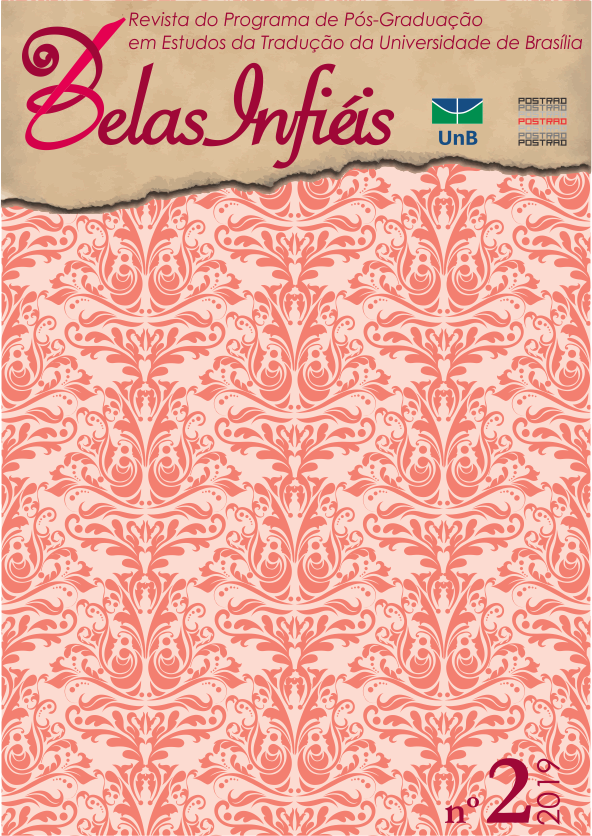Translate and recreate. Aurora Venturini’s strategies in Cantos de Maldoror: Satánica Trinidad
DOI:
https://doi.org/10.26512/belasinfieis.v8.n2.2019.24380Keywords:
Translation studies. Literary translation. Reception. Lautréamont. Les chants de Maldoror.Abstract
This article aims at examining some aspects of the Argentine writer Aurora Venturini’s translation of Les chants de Maldoror, which was published in 2007 with the title Cantos de Maldoror: Satánica Trinidad. The analysis of this book shows that the activity of translation plays a role that exceeds linguistic transposition from one language into another: fidelity to the letter and equivalence between two languages are not a priority for the Argentine translator. The way she works the foreign text is related to the hermeneutical approach. Venturini’s translation is, in fact, a translation-recreation (OSEKI-DÉPRÉ, 1999) or a translation-imitation (OSEKI-DÉPRÉ, 1999), a derivative text that depends on the critical reading of Ducasse’s work, of its production and reception contexts and the study of the author biography.
Downloads
Downloads
Published
How to Cite
Issue
Section
License
Given the public access to this journal, the texts are free to use but requires the recognition of the original authorship and initial publication in this journal to be properly stated.
 The journal allows the use of works published for non-commercial purposes, including the right to submit the work to publicly accessible databases. Published contributions are the sole and exclusive responsibility of the author(s).Â



















